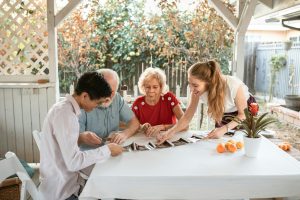Community Land Trusts: Democratizing Ownership in Hot Markets
In today’s rapidly growing real estate market, homeownership continues to be out of reach for many low and moderate-income households. As property values continue to rise, many families are forced to choose between high housing costs or living in substandard conditions. However, there is a solution that aims to change this trend and give power back to the community – Community Land Trusts (CLTs). In this article, we will explore the concept of CLTs and how they are democratizing ownership in hot markets across the country.
What is a Community Land Trust?
A Community Land Trust is a nonprofit organization that focuses on creating and preserving affordable housing and promoting community development. The basic principle of a CLT is to separate the ownership of land from the ownership of the structures on the land. This means that the CLT will own the land while the homeowner owns the building. This unique arrangement allows for the long-term affordability of housing while also giving the community control over the use of the land.
How Does a CLT Work?
A CLT typically acquires land through donations, purchases, or government grants. The land is then held in trust by the CLT, which acts as a steward of the property. The CLT then sells or leases the homes on the land to low and moderate-income families at an affordable price. One of the major advantages of a CLT is that it is a long-term investment in the housing market, allowing for homes to remain affordable for future generations.
The Benefits of a CLT
One of the main benefits of CLTs is that they provide a solution to the affordable housing crisis in hot markets. By separating the cost of the land from the building, CLTs can keep housing costs low while also keeping properties within the reach of low and moderate-income families. Additionally, CLTs offer stability to the community by providing long-term affordable housing options and preventing displacement due to rising property values.
Democratizing Ownership
One of the most significant impacts of CLTs is that they give power back to the community. CLTs are typically run by a board of directors that includes community members, homeowners, and local organizations. This ensures that the community has a say in how the land is used and that the needs of the community are taken into consideration. This collaborative approach to property ownership also fosters a strong sense of community ownership and engagement.
Success Stories of CLTs
CLTs have been successfully implemented in many hot markets across the country. One such example is the Dudley Street Neighborhood Initiative (DSNI) in Boston. Started in 1984, DSNI has developed over 225 units of affordable housing and continues to work towards creating a sustainable and equitable community through its CLT model.
In Washington, D.C., the Community Development Cooperative (CDC) is another success story. The CDC’s CLT model has helped provide homeownership opportunities to low and moderate-income families and prevented displacement in the rapidly gentrifying neighborhoods of the city.
The Future of Community Land Trusts
With the affordable housing crisis showing no signs of slowing down, CLTs have emerged as a viable solution to democratizing ownership in hot markets. As more communities and organizations become aware of the benefits of CLTs, we can expect to see a rise in the number of CLTs across the country. Additionally, government support and funding for CLTs can further help to expand their reach and make a significant impact on the affordable housing crisis.
Conclusion
Community Land Trusts are proving to be a game-changer in the fight against the affordable housing crisis in hot markets. By separating the cost of land from housing and involving the community in decision-making, CLTs offer a sustainable and community-focused solution to homeownership. As their popularity grows, we can hope to see more families achieve the dream of homeownership while preserving the character and diversity of our communities.











